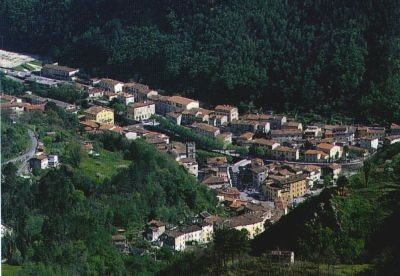
Help save the Church of Santa Caterina in LUCCA – Italian style
There is still time to record your vote to help save and restore one of Lucca’s most beautiful churches. FAI (the Fondo Ambiente Italiano) is a not-forprofit organisation modelled one the UK’s National Trust. It exists to raise funds to support the restoration and care of Italy’s national heritage, whether it be buildings or areas of natural interest, and to raise awareness and improve access to these sites for the benefit of all.
Every other year, it conducts a major survey among Italian residents of the places they would most like to see restored and preserved for future generations.
This project is called I Luoghi del Cuore (places of heart) and FAI uses its results to raise awareness of deserving projects with local and national organisations, and to lobby for their restoration, with the financial support of the bank.
This year, high on the list of potential restoration projects is the Chiesa di Santa Caterina in Lucca, The church sits at the angle of Via del Crocifisso and Via Vittorio Emanuele II, opposite the former cigar factory, the Manifattura Tabacchi, itself scheduled for development by the Comune di Lucca. The unusually ovalshaped church, which dates from the mid 18th century, is regarded as one of the finest surviving examples of the high baroque style.
Yet for over 20 years it has been closed, and is now in need of considerable repair. FAI was instrumental in having it opened briefly in May so that luchesi could get a glimpse of its extraordinary interior. If you are registered resident in Italy, and wiuld like to record your support for this architectural gem, here’s what you do. The process is slightly laborious, but only to deter dirty tricks, as this one prize worth winning.
. Go to the project website: www.iluoghidelcuore.it
. Hit the button Segnala il tuo luogo del cuore
. In the pop up screen enter your provincia and Comune, and select Chiesa di Santa Caterina from the choices offered to you (yes there are other deserving projects in Lucca, but the Church of Santa Caterina currently has the best chance of wining funds)
. Add additional comments or photographs if you wish but thi is optional.
. Complete the security test ( a simple addition of numbers)
. Finally press the Completa la segnalazione button, which takes you to the registration page, where you will need to enter your name, address, e-mail address etc.
. You will then receive confirmation that an e-mail has ben sent to you from I luoghi del cuore
. Open the e-mail and hit the Attiva button to confirm your vote (satisfyingly, you will then see the total number of votes cast for your choice increase by one on the I Luoghi del cuore website).
It costs nothing, so please do your bit. Final results will be announced by FAI after voting closes on 30 September.
Exceptionally, the church will be open from 5pm to 8 pm each Saturday and Sunday during the month of September. FAI petitions can be signed at the church while visiting.




